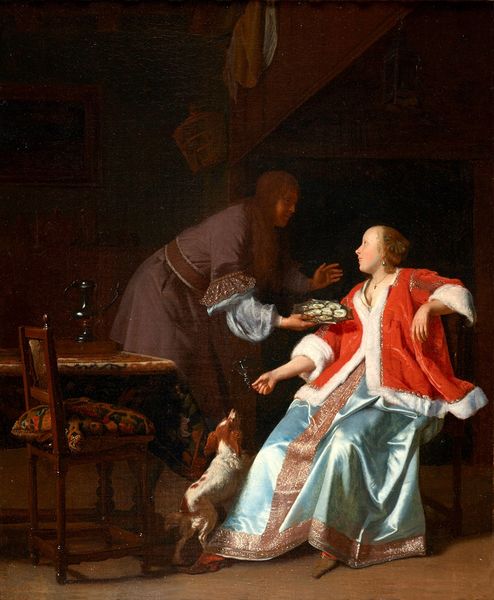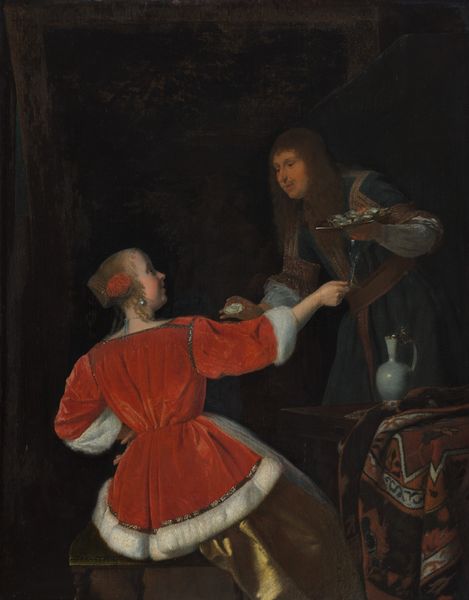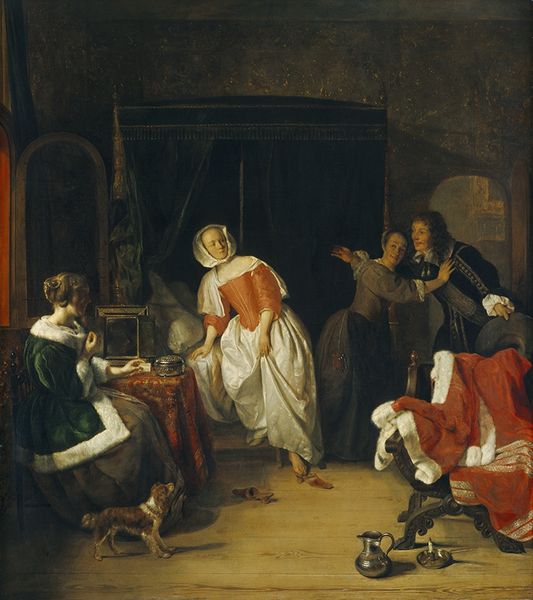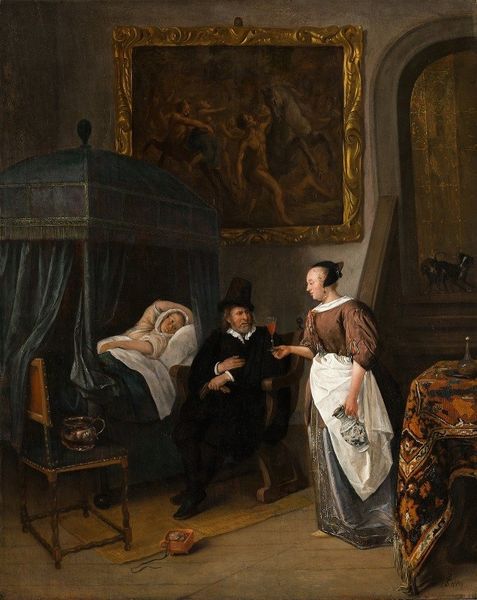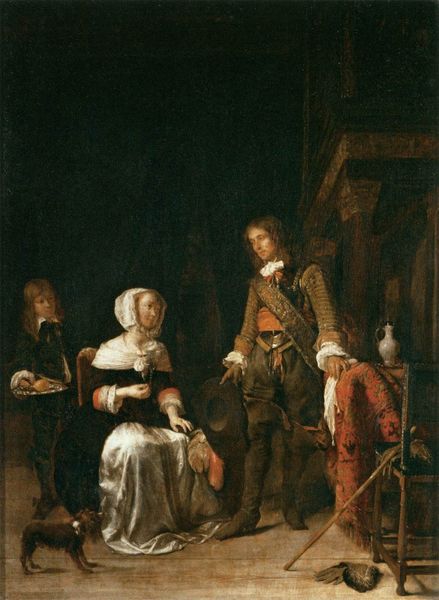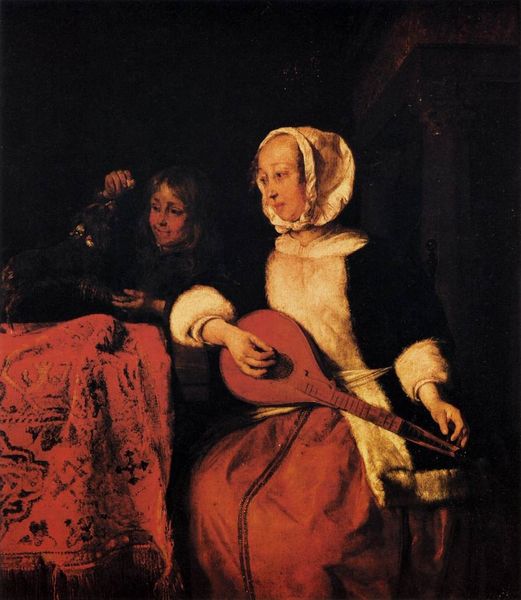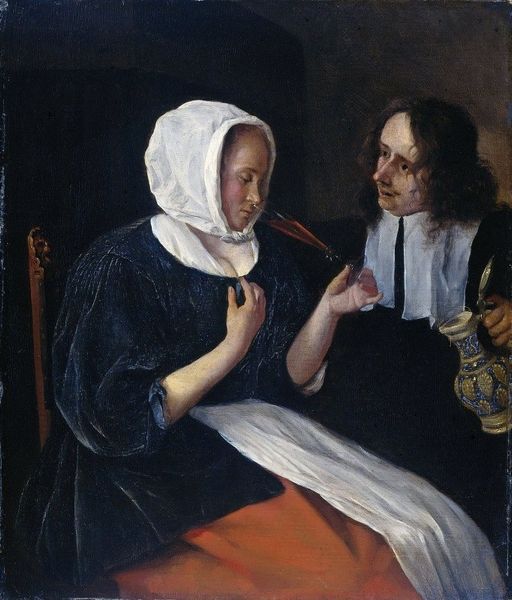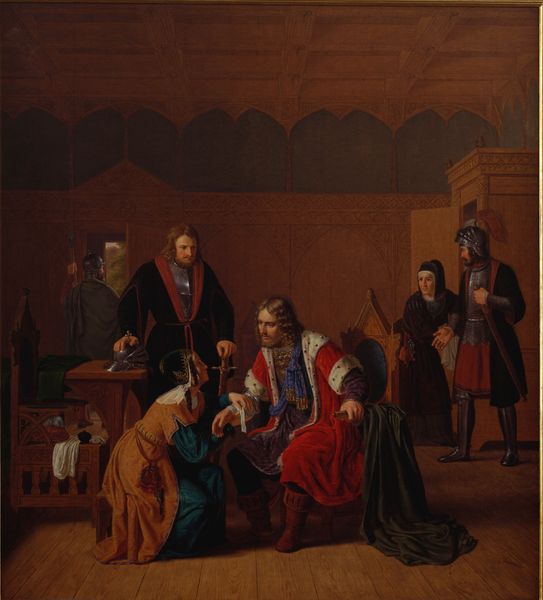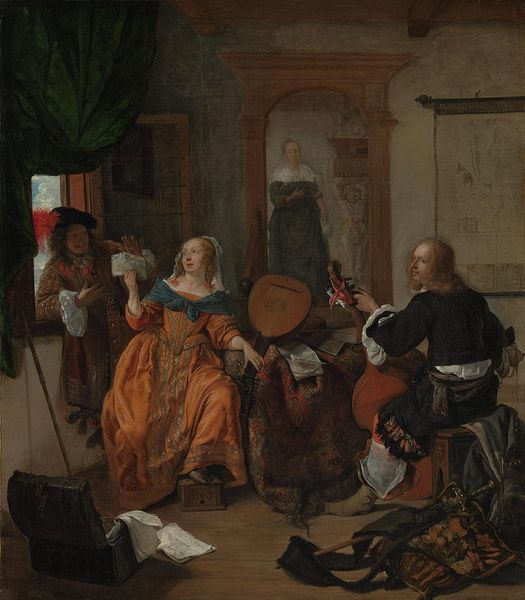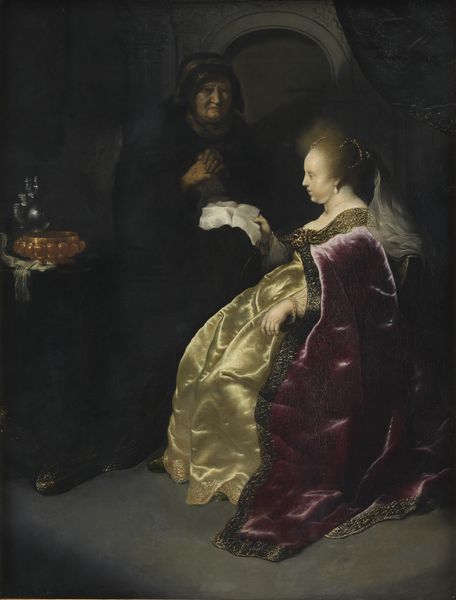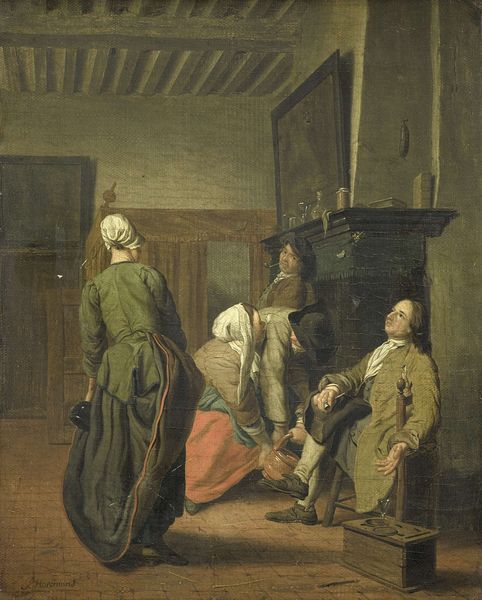
painting, oil-paint
#
portrait
#
baroque
#
dutch-golden-age
#
painting
#
oil-paint
#
oil painting
#
genre-painting
Copyright: Public domain
Editor: Jacob Ochtervelt’s “The Lemon Slice,” created in 1667, is an oil painting that strikes me with its depiction of what seems like a common domestic interaction. What stands out to you most in terms of how this work might engage with ideas around material culture? Curator: Let's look beyond the surface, shall we? It is painted during the Dutch Golden Age. Look at the texture, quality and implied value of fabrics. Consider how these fabrics speak to a culture of wealth and access facilitated by Dutch maritime trade? Editor: That’s fascinating, I didn't think of it that way. Is it the deliberate, almost meticulous detail, that draws the connection? Curator: Exactly. Ochtervelt meticulously renders each fold of the woman’s satin skirt, the plush fur trim of her jacket, the intricate design of the rug. He wants us to acknowledge the workmanship and how these signifiers tell us that the portrayed individuals can purchase such luxuries. Moreover, it emphasizes the social standing of the subjects relative to those who labor to create these objects of trade. Editor: So, it’s less about the ‘lemon slice’ itself and more about everything surrounding the action - all the indicators of material status and access to it? Curator: Precisely! And further than that, the artist’s skill and artistry is another object for consumption. Do you see how this work encourages us to question not just WHAT is being depicted but HOW and WHY? Editor: I do. I will now consider more closely how artists depict items and how those items connect to broader production and consumption patterns in that specific period. Curator: Precisely. A single slice of lemon provides a sour commentary about luxury and the material world in seventeenth century Netherlands.
Comments
No comments
Be the first to comment and join the conversation on the ultimate creative platform.
